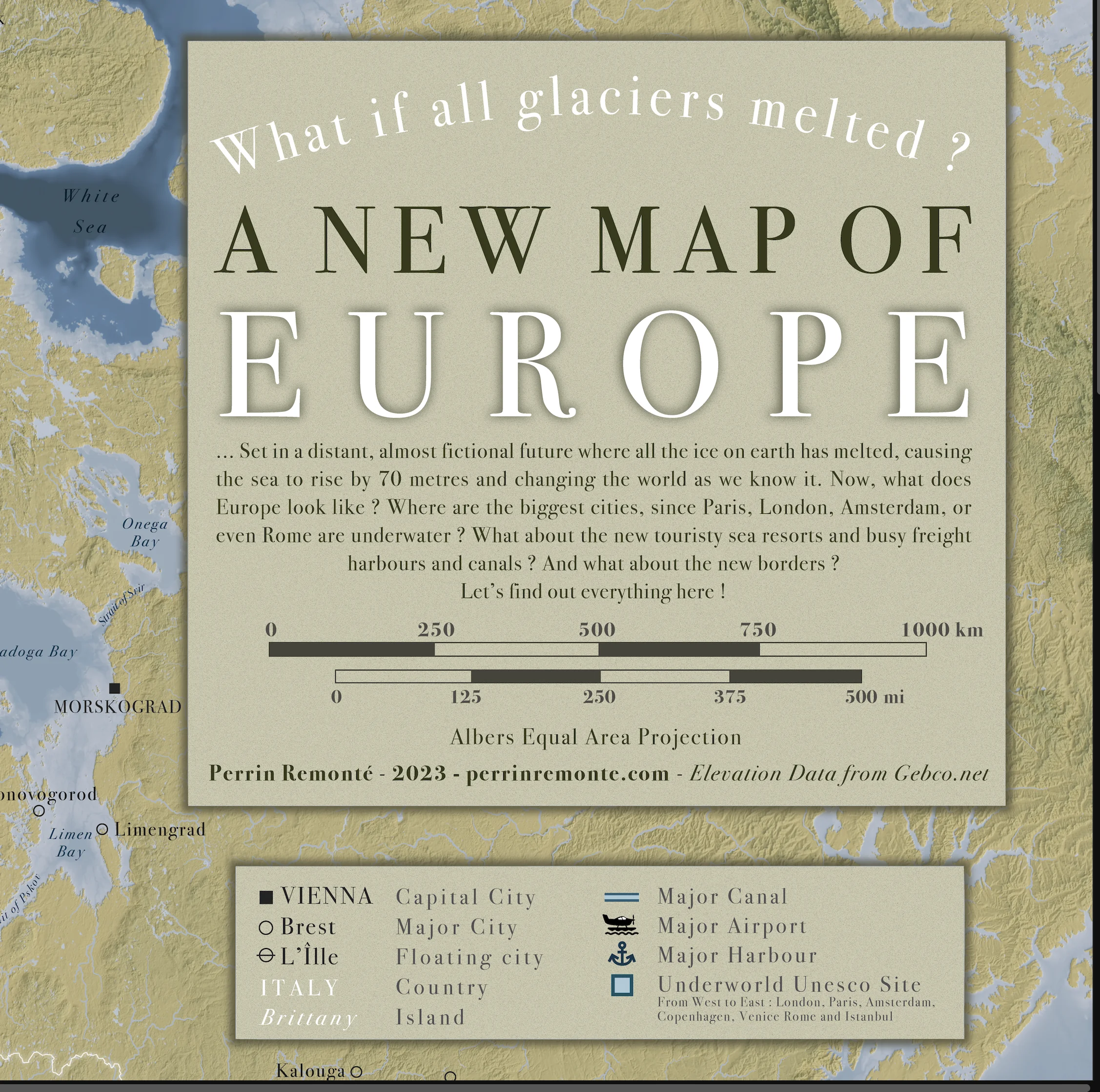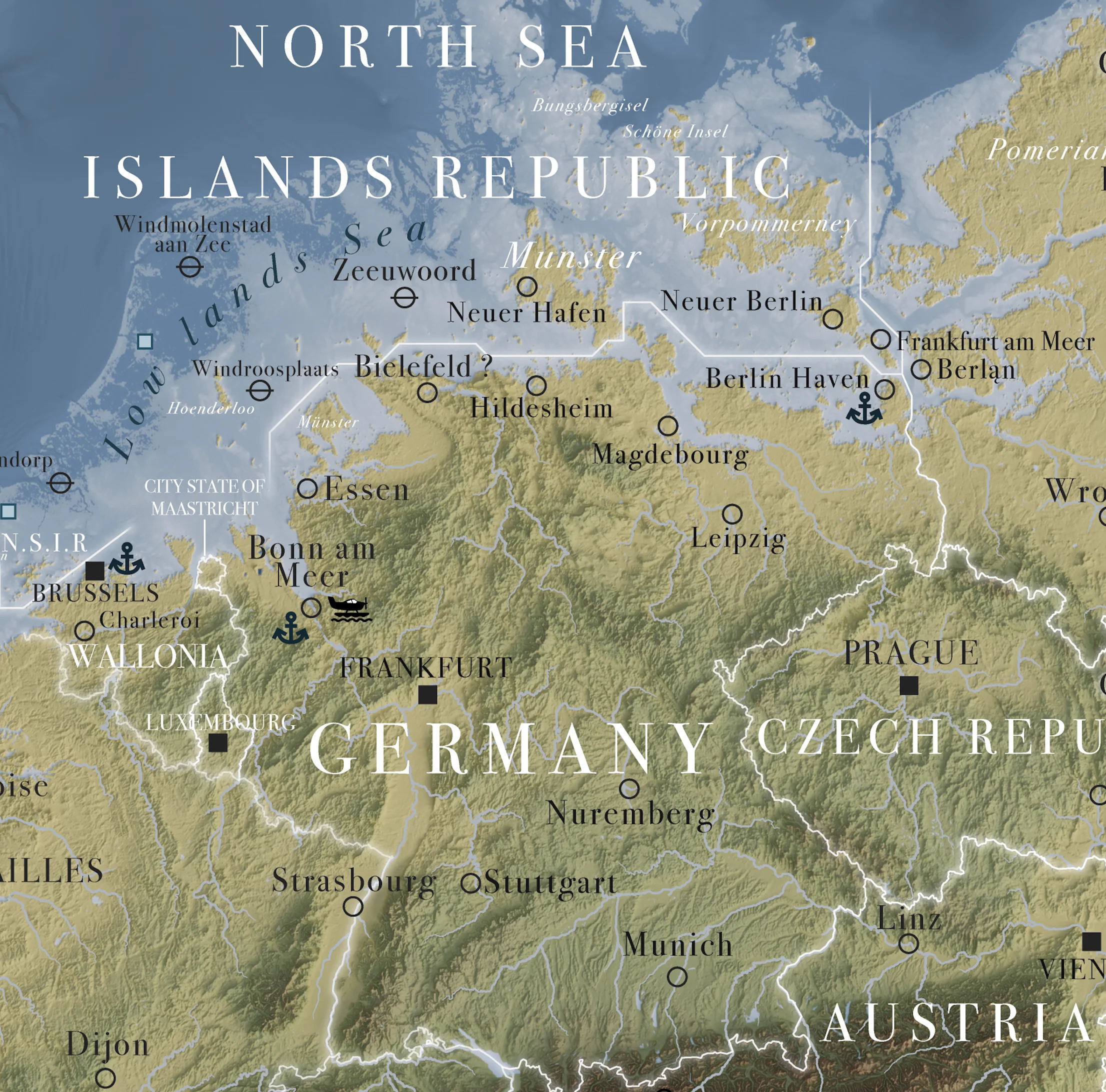If all the ice on Earth were to melt, it would lead to a significant rise in global sea levels. Currently, the ice on Earth is estimated to contain enough water to raise sea levels by approximately 216 feet (66 meters).
The maps below, created by Reddit user mydriase, show what would happen with the European continent if all glaciers on Earth will melt.
If all the ice on Earth were to melt, Europe, like many other continents, would experience significant changes in its coastline. Coastal areas would be submerged, leading to the loss of land and displacement of populations. Borders between countries in Europe would also be affected, as coastlines would shift, potentially necessitating adjustments to maritime boundaries. Many low-lying coastal cities and regions, including parts of the Netherlands, Belgium, Denmark, and the United Kingdom, would be severely impacted. Mitigation efforts and adaptation strategies would be necessary to address the consequences of such a sea level rise.
This scenario is, however, highly unlikely to occur in the near future. It would require extremely high global temperatures and potentially thousands of years to melt all the ice currently on Earth.
However, in the past, there have been periods of natural climate change when much of the Earth's ice melted. One of the most notable instances was during the last interglacial period, known as the Eemian, which occurred approximately 130,000 to 115,000 years ago. During this period, global temperatures were higher than they are today, and sea levels were estimated to be around 20 to 30 feet (6 to 9 meters) higher than they are currently.
To learn more about climate change and sea level rises, see:
- The Truth About Energy, Global Warming, and Climate Change: Exposing Climate Lies in an Age of Disinformation
- A Brief History of the Earth's Climate: Everyone's Guide to The Science of Climate Change
- How to Prepare for Climate Change: A Practical Guide to Surviving the Chaos








This post may contain affiliate links. As an Amazon Associate, I earn from qualifying purchases.
Comments
Post a Comment